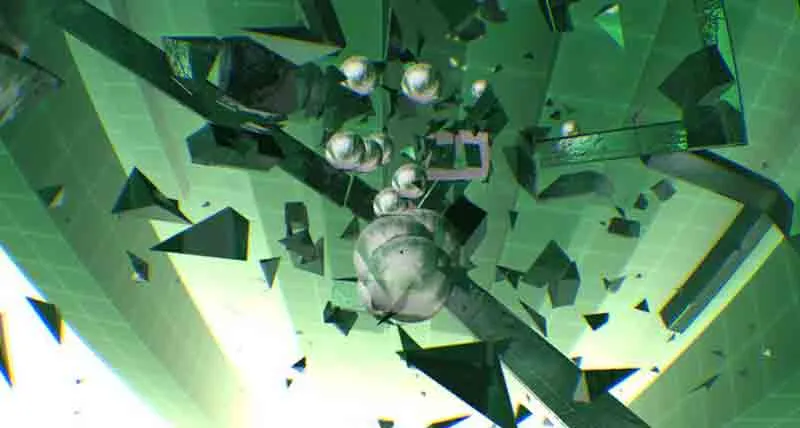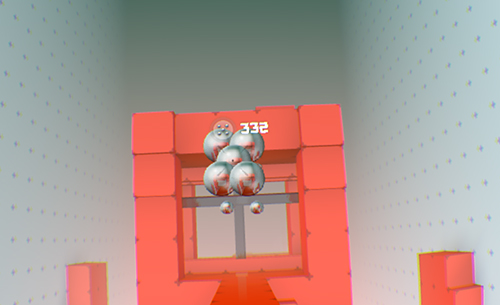Amid the buildup to the Oculus Connect 2 conference in late September, Smash Hit arrived with very little fanfare in the Oculus Store on Gear VR. It instantly became my favorite game on the platform and makes for a great showpiece for family and friends as an introduction to virtual reality.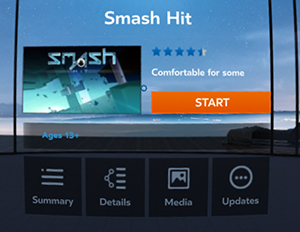
You can download the iOS or Android version of Smash Hit to show people a fun, easy-to-learn mobile game, and then drop them into virtual reality to play the VR version on Gear VR and see them realize just how different and engaging VR is compared to previous platforms. Smash Hit is the most successful title from Sweden-based Mediocre, a game development company that makes non-violent games simulating physics for novel gameplay. According to the makers, the mobile game has been downloaded more than 100 million times.
The VR version of Smash Hit is free right now and the co-founders of Mediocre, Dennis Gustafsson and Henrik Johansson, “haven’t decided yet how long to keep it free or what business model we will use in the future.”
“The market for VR games is very small at the moment, so this is sort of an experiment for us,” Gustafsson wrote in an email. “At this point we’re just happy to contribute to the expansion of VR as a gaming platform.”
What is Smash Hit?
In Smash Hit on mobile, the player taps the screen to unleash a ball that arcs through space in front of them. The goal is to hit crystals that shatter like glass. Successfully hitting each crystal arms the player with more balls to toss. Hitting enough of the crystals in a row eventually gives the player up to five balls to launch with just one press, making it easier to hit the targets in more challenging areas. Eventually dozens of balls are being tossed around the play area and glass is flying everywhere. The player moves in a straight line toward the horizon with breakable objects entering their path. Colliding with one of these objects resets the player down to a single ball. Game over if the player runs out of balls.
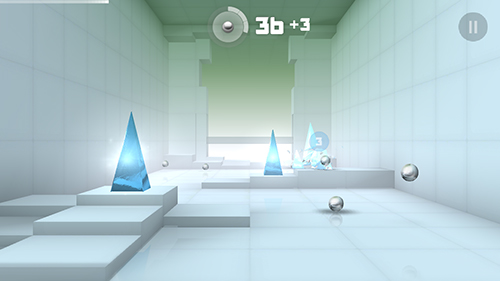
In VR, the game is the same except the player chooses where to aim the ball with their gaze. A ball is launched by pressing the touchpad on the Gear VR headset or with a button on a gamepad controller.
“It was a relatively smooth process” of bringing the game to VR, Gustafsson wrote. “We had envisioned a VR version even before the mobile release, and when the Gear VR started to gain some traction we felt it was a good fit.”
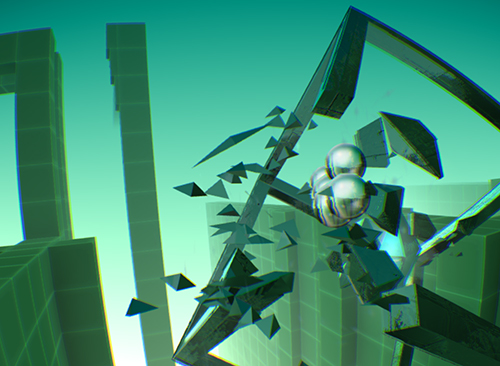
What does VR add?
The way Smash Hit was adapted for VR is very different from another mobile title that made it onto Gear VR: Temple Run.
Temple Run is a an “infinity runner” on mobile phones allowing players to swipe in different directors or tilt the phone to avoid objects on paths that change from game to game. Infinity runners are incredibly addictive and there are many titles in the genre on mobile phones. Temple Run was reimagined for VR with a first-person perspective and an entirely new 3D environment. While the mobile title sees players making 90-degree turns, the VR version uses long winding curves to redirect the player in new directions. The design choice is usually a no-no for stomachs and some people might get uncomfortable in VR. While the overall concept of Temple Run in VR is the same, it’s a very different experience.
Smash Hit is everything seen in the mobile version and more. The player only ever travels in a straight line and the rate at which he or she travels is fairly constant. Overall, the game should be more comfortable for more people than the adaptation of Temple Run, though at certain points in Smash Hit the whole environment rotates around the player. This adds a bit of challenging gameplay to the mix but it’s possible some players could find that disorienting. I found it fun.
“When the player was allowed to look around freely, we had to fill in geometry at a lot of places that was never visible in the mobile version,” Gustafsson wrote. “We also had to redesign the levels slightly to make them more suitable for the new aiming scheme. For example scenarios that required the player to use multiple fingers and shoot two obstacles on opposite sides didn’t work at all in VR.”
What’s next?
Mediocre got its name because the co-founders “don’t really play video games, but thrive on creating.” They “got sick and tired of wading through the endless stream of crappy games out there. Thousands of developers pushing game after game where mediocrity seems to be the benchmark, we decided to develop different games without the compromises.”
One of Mediocre’s other titles, Does Not Commute, won an Apple Design Award this year and they are planning a major update to the mobile version of Smash Hit “very shortly.”
“We’ve been following the development in VR since the beginning and we’re really excited about what new games genres this can bring to the market,” Gustafsson wrote. “Our next game will be for mobile devices, but we have talked a lot about doing a VR-only game in the future.”

